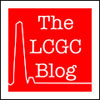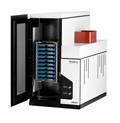 |
|
| |
 |
| |
| The LCGC Blog |

|
Large-Molecule Analysis for Small-Molecule People
I speak with many “small-molecule” folks who are moving into biomolecule analysis and are dismayed at the heterogeneity of proteins and the variety of techniques required to characterize them. My work in recent years has taught me to take a high-level view on the subject and cut through the more esoteric and specialized applications to focus on what is more routine in biomolecule characterization. For those of you faced with moving into this type of analysis or just for interest, here is my guide to characterizing protein biologics. |
|
| |
| LCGC TV |

|
Buying a Mass Spectrometer: Questions of Resolution and Ion Mobility?
If you can afford more resolution for your mass spectrometer it’s always a good idea to have some in reserve. Barbara Larsen from DuPont Central Research and Development discusses how you should decide how much resolution you need. She also offers advice on the benefits of ion mobility for mass spectrometry. |
|
| |
| Quick Poll |

|
Data Integrity in the Lab
Data integrity in the laboratory is currently a hot topic. What is your company or laboratory doing about it? Take our quick poll today! The results will appear in an upcoming issue of LCGC magazine. Take the poll |
|
| |
| Featured Articles |
|
| Advances in Separations Technologies |
Interested in mass spectrometry, chromatography, or electrophoresis? Looking for a conference with strong scientific content, robust program, world renowned speakers, poster sessions, courses, workshops, tutorials, panel discussions, major exposition showcasing new product launches? Check out HPLC 2016 San Francisco...largest, most recognized international conference and exposition devoted to advances in separations technologies, leading the way to ensure the separation sciences remain a powerful analytical tool.
 Learn more Learn more |
|
|
| |

|
On Maintaining Technical Proficiency
Maintaining and growing technical competencies requires effort. For scientists in any field, staying current with new developments is essential. The irony is that today, when we are flooded with information, keeping up with what matters is actually a bigger challenge than it was in the past. |
|
| |
| Featured Application Note |
|
| |
Featured Products
|
 |
 |
| New thermal desorption instruments |
Drug-to-Antibody Ratio (DAR) Analysis |
Markes’ new ‘xr’ series of thermal desorption instruments pre-concentrate organic vapours sampled using sorbent tubes, canisters and on-line air streams, and as well as options for automation, incorporate powerful new advances that extend the capabilities of analytical laboratories analysing VOCs and SVOCs in air and materials.
 Learn more Learn more |
TSKgel Butyl-NPR, 2.5 µm HIC columns are optimized for the successful separation of unconjugated and drug conjugated mAb samples with baseline resolution. This enables an easy integration and quantification of different drug pay loads in ADC characterization.
 Learn more Learn more |
|
|
|
| |
New Webcasts
|
| |
On Demand Webcasts
|
|
|
 |
| |
|
|
|
| |